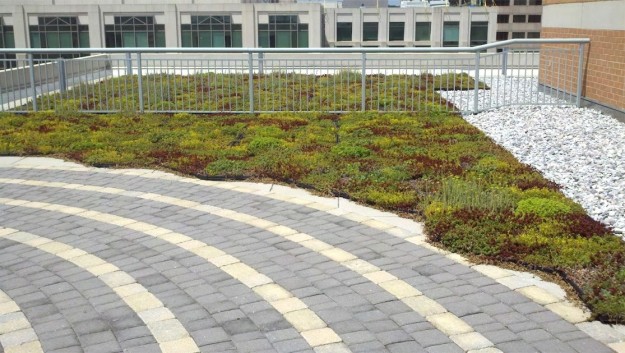If you are one of the vast majority of modern workers you are sitting at a desk looking at this screen. Are you daydreaming about a lush paradise? Stand up, stretch your fingers and toes, and look out the window.
What kind of paradise do you see?
Do you see street trees and the occasional landscaped bush? A bubbling fountain or a rooftop garden? Or is your environment built of concrete plazas, brick walls, and a parking lot?
Balancing work and personal goals is an ongoing task. Claiming your weekend, taking care of your mind and body, and spending time with friends and family is vital. During your regular ‘ole Tuesday afternoon, taking a small break can also be beneficial.

Recent research encourages small, intentional “micro-breaks” like standing up and looking out the window.
How can such a micro-break benefit you? How is your brain and body reacting? Kate Lee and her colleagues at the University of Melbourne are asking these exact questions.
“How do we go about incorporating green microbreaks into our workday? How long do they need to be? How frequently do we need them? How long can the benefits last? These are things we need to be thinking about.”
Lee’s study measured attentional levels of participants engaging in menial computer tasks. After five minutes of a task, participants looked at a green roof or a concrete roof image for 40 seconds, then went back to work. Those who took a green roof micro-break performed better at the task. The behavioral measure used—the sustained attention to response task (SART)—has previously been mapped against brain imaging. Research already shows us that the brain responds in a predictable way when people tap their sustained attention. Evidence that “viewing nature” supports better sustained attention is a new but promising line of research. Evidence for the many health benefits of spending time in nature is strong.
Views of nature can boost attention and mood over minutes to hours. Attention, in particular, can improve after experiencing or viewing ‘restorative’ nature scenes. People living and working in high-rise city buildings, who have restricted views of nature, may have views of “green roofs” rather than a large park or mountain. Green roofs are typically installed on building rooftops for environmental benefits but there is value in considering other benefits for the millions of people looking out their office window everyday.
The International Green Roof and Greenwall Projects database is one example of an ongoing effort to promote and map green roof access. Some U.S. cities, such as Washington D.C. offer incentives for green roof installation.
—
Read more about this research:
